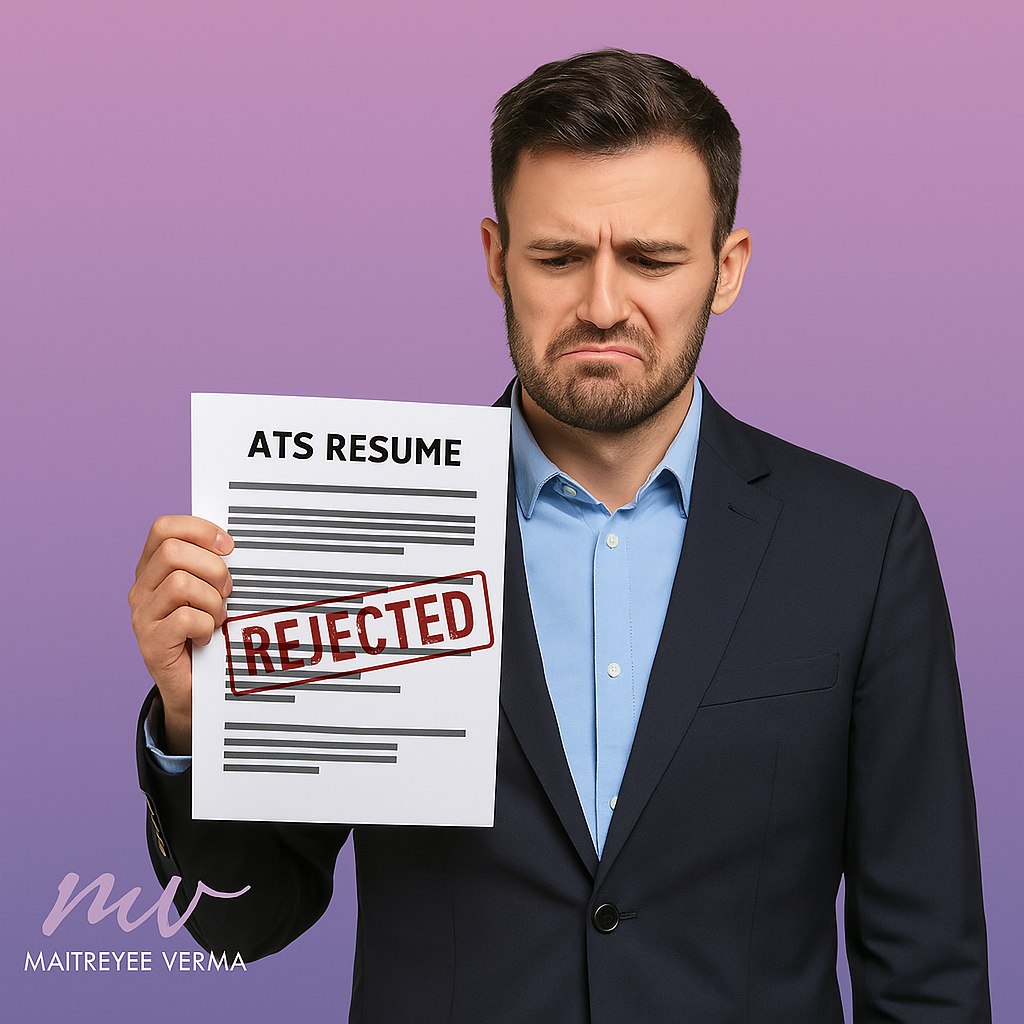Because clearing the system doesn’t mean convincing the human.
You’ve probably heard it a hundred times: “Your resume must be ATS-optimized.” And yes — that’s true. Applicant Tracking Systems (ATS) are often the first hurdle, scanning resumes for relevant keywords before they ever reach a recruiter’s desk.
But here’s the catch: getting past ATS is just step one. A resume that is only “keyword stuffed” may trick the system, but it won’t win over the recruiter or hiring manager. And in the end, that’s who makes the hiring decision.
Why ATS Optimization Alone Isn’t Enough
Think about it. If two resumes both pass ATS, what makes one stand out? Not just keywords. It’s the content — the way your achievements, impact, and leadership journey are told.
An ATS-friendly resume without depth often reads like this:
- “Managed projects. Handled teams. Responsible for sales growth.”
It ticks the boxes for the system, but it doesn’t differentiate you from the next ten candidates.
Now, imagine the recruiter actually reading it. They’re looking for more than keywords — they want to see:
- What changed because you were in that role?
- How did you deliver impact that others couldn’t?
- Why should you, and not someone else with the same title, be shortlisted?
That’s where most resumes fail.
What More Is Required Beyond ATS
A strong resume needs to go beyond “optimized” and become persuasive. That means:
- Clarity of Impact
Not just what you did, but what you achieved. Recruiters are drawn to measurable outcomes — revenue grown, costs reduced, markets expanded, teams transformed. - Storytelling Through Progression
Your resume should read like a journey. Did you move from execution to strategy? From managing a team to shaping a business unit? That progression tells your growth story. - Human Appeal
At the end of the day, a recruiter has to feel that you are different. This comes through in how achievements are framed, how leadership is demonstrated, and how your career trajectory is positioned.
In short, ATS might open the door — but it’s the content that gets you invited inside.
When People Say: “But My Resume Is Already ATS-Optimized”
This is something I hear often. Someone comes to me and says:
“My resume is ATS-friendly, but I’m still not hearing back from recruiters.”
Here’s what usually happens:
- Their resume has the right keywords, but not the right narrative.
- It passes the system, but it doesn’t hold a recruiter’s attention.
- It looks fine at a glance, but it doesn’t actually convey impact.
What I do in these cases is simple but powerful: I reframe their content.
Instead of:
- “Handled a sales team of 15.”
I’ll help them say:
- “Rebuilt a 15-member sales team, delivering 30% YoY growth and expanding into two new regions within 18 months.”
Same role. Same facts. But the second version speaks to impact, scale, and credibility.
The Real Bottom Line
Your resume should not just be designed to beat the bots. It must also be powerful enough to win over the humans who make the decisions. Without that balance, even the most “optimized” resume can quietly die in a recruiter’s inbox.
If you’ve been struggling with an “ATS-powered resume” that isn’t getting you interviews, let’s talk.
Book a 1:1 call with me and I’ll show you how to turn it into a document that doesn’t just pass the system, but actually opens doors.
Because passing ATS is easy. Standing out to people is the real game.

